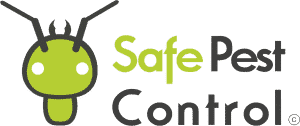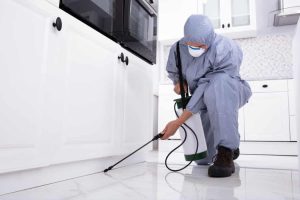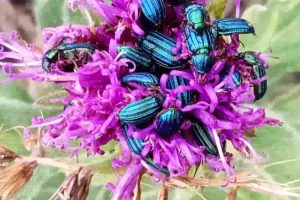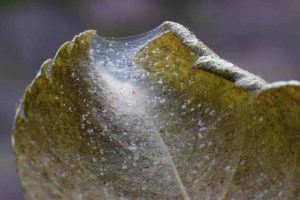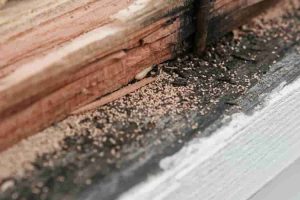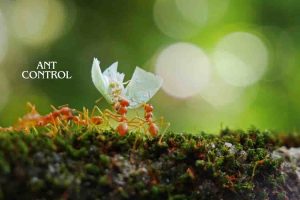In the fast-paced world of food manufacturing, ensuring effective pest prevention is crucial for maintaining the safety and quality of our products. Adhering to industry standards and regulations is not just about compliance but also about protecting our brand and consumers. Implementing a comprehensive pest management strategy helps us stay proactive rather than reactive.
One key practice is maintaining clean and tightly sealed trash cans and dumpsters to prevent pest infestations. Regular removal of waste and maintenance of grease traps and drain covers are essential steps in our sanitation efforts. Additionally, installing and maintaining mesh screens on windows and doors helps keep unwanted pests out while allowing ventilation.
For businesses looking to enhance their pest management practices, creating a written, preventative plan is vital. This plan should outline specific measures and protocols to prevent contamination before it occurs. By focusing on prevention and ensuring our facilities meet the stringent requirements of the Food Safety Modernization Act (FSMA), we can safeguard our operations and uphold the highest standards in food safety.
Developing an Integrated Pest Management (IPM) Program
Creating an effective Integrated Pest Management (IPM) program involves understanding what IPM entails, identifying key components of the program, and emphasizing the role of inspections and monitoring.
Understanding IPM
Integrated Pest Management (IPM) is an environmentally friendly approach to managing pests that combines different tactics. It focuses on minimizing the use of harmful chemicals by leveraging a combination of biological, cultural, mechanical, and chemical controls. This method prioritizes long-term prevention and control of pests with minimal impact on human health and the environment.
Key principles of IPM include:
- Understanding the life cycles of pests.
- Recognizing how pests interact with their environment.
- Using various control methods only when needed.
Our goal with IPM is to achieve effective pest management by integrating multiple strategies that work together to suppress pest populations.
Components of an Effective IPM Program
An effective IPM program consists of several critical components. Each component plays a significant role in maintaining control over pests in food manufacturing environments.
Key components include:
- Prevention: Focus on preventing pest infestations through sanitation, exclusion, and facility maintenance.
- Identification: Correctly identifying pest species to choose the most effective control methods.
- Monitoring: Regular monitoring of pest populations and their environmental conditions to detect early signs of infestation.
- Control Strategies: Implementing a combination of biological, cultural, mechanical, and chemical controls as needed.
- Documentation: Maintaining detailed records of pest monitoring data, treatments applied, and outcomes.
These components should be customized to fit our specific needs, ensuring that control methods are tailored to the unique challenges of our facility.
Role of Inspections and Monitoring
Inspections and monitoring are vital for detecting pest activity early and preventing infestations from spreading. Regular inspections help identify potential entry points, food sources, and breeding grounds for pests.
Effective inspection and monitoring practices include:
- Routine Inspections: Conducting inspections on a scheduled basis, such as weekly or monthly.
- Monitoring Devices: Using traps and other monitoring devices to track pest activity and gather data.
- Data Collection: Documenting findings and maintaining accurate records to identify trends and make informed decisions.
By consistently inspecting and monitoring our facility, we can quickly address issues and adapt our pest management strategies to prevent future problems. This proactive approach is key to maintaining a pest-free environment in food manufacturing.
Sanitation and Facility Maintenance Strategies
Ensuring cleanliness and proper upkeep in food manufacturing facilities is critical for preventing pest infestations. This involves implementing stringent sanitation protocols, maintaining infrastructure, and securing entry points against pests.
Sanitation Protocols
Sanitation is the cornerstone of pest prevention in food facilities. We must establish a master sanitation schedule that includes regular cleaning and sanitizing of all surfaces, including floors, walls, and equipment. This helps remove food residues that attract pests. Regular inspections should be part of our routine to check the effectiveness of our cleaning procedures.
Good Manufacturing Practices (GMPs) are essential in this process. They require thorough training for our staff so everyone is aware of their role in maintaining hygiene. Cleaning products and tools should be stored in sanitary conditions to prevent contamination. By staying vigilant and maintaining high sanitation standards, we can minimize the risk of pest infestations.
Infrastructure Maintenance
Maintaining the physical structure of our facility helps keep pests out. This includes routinely inspecting and repairing any damage to walls, floors, and ceilings. Cracks and crevices provide entry points for pests, so sealing them is a priority.
We also need to consider exterior lighting, as bright lights can attract insects. Installing insect-resistant lights or positioning lights away from entrances can reduce this risk. Air curtains and door sweeps are effective barriers that prevent pests from entering when doors are opened. Keeping our facility in good repair is key to pest prevention.
Preventing Pest Entry
Securing entry points is vital to keeping pests out. Windows should be fitted with screens that are in good repair to block insects. Inspections should be scheduled regularly to ensure integrity. Installing air curtains at entry doors can act as a deterrent by creating a barrier that pests cannot cross.
Proper maintenance of door sweeps and seals ensures that small insects and rodents don’t find their way inside. Additionally, maintaining cleanliness around the building, such as removing trash and keeping landscaping neat, can reduce pest harborage areas. By focusing on these areas, we can effectively prevent pests from entering our facility.
Implementing these strategies helps us create a clean, safe environment in food manufacturing.
Preventive Measures for Food Safety and Quality
Adopting preventive measures is crucial to maintaining food safety and quality in food manufacturing. By focusing on supplier standards, proper material handling and storage, and thorough employee training, we can mitigate risks effectively.
Supplier Standards and Audits
Ensuring food safety and quality starts with stringent supplier standards and audits. We must work with suppliers that meet regulatory requirements, such as the Food Safety Modernization Act (FSMA) and the U.S. Food and Drug Administration (FDA) guidelines.
We should conduct regular audits to verify their compliance with Hazard Analysis Critical Control Point (HACCP) principles. These audits help ensure that suppliers follow proper hygiene and handling practices, particularly regarding allergens and preventive controls. Building strong relationships with our suppliers is essential, and we must insist on complete transparency about their processes.
Material Handling and Storage
Proper material handling and storage are vital to food safety. Raw materials should be stored in a clean, temperature-controlled environment to prevent contamination and spoilage. We need to maintain clear labeling and segregation of raw materials, especially those containing allergens, to avoid cross-contamination.
Implementing preventive controls such as pest control measures, like mesh screens and self-closing doors, can help protect storage areas. Regular inspections and cleaning schedules ensure that facilities remain free of pests and contaminants. Maintaining thorough records of temperatures and storage conditions is also critical for quality assurance.
Employee Training and Compliance
Employee training is fundamental in ensuring food safety and quality. We must provide ongoing training programs covering hygiene practices, equipment handling, and recognizing potential hazards. Training should emphasize compliance with FDA and FSMA standards.
By fostering a culture of safety, we can ensure that employees understand the importance of their roles in maintaining quality. Regular refresher courses and evaluations help keep knowledge current and reinforce the significance of food safety protocols. Clear communication and easy access to training materials improve adherence to standards across all levels of the organization.
Pest Identification, Response, and Documentation
In food manufacturing, timely pest identification, a swift and effective response, and thorough documentation are essential to maintain food safety and quality. Each aspect must be handled carefully to ensure the integrity of the facility and products.
Identifying Common Pests
We need to identify common pests such as rodents, insects, and birds. Rodents spoil food and carry diseases. Insects, including ants and flies, can contaminate food with pathogens. Birds may nest in facilities, creating unsanitary conditions.
We should regularly inspect high-risk areas like storage and processing zones. Use traps and monitoring devices to detect pest activity. Training our staff to recognize signs of infestation, such as droppings and damage, is also crucial.
Maintaining Material Safety Data Sheets (MSDS) and risk analysis reports helps us understand the pests we might encounter and prepare proper management strategies.
Effective Response to Infestations
Once we detect an infestation, we need to act quickly. Our response plan should include the use of approved pesticides and treatments to eliminate the pests. Always follow the guidelines for safe and effective application, referring to the MSDS for each pesticide.
Hiring professional pest control services can be beneficial. They are trained to handle severe infestations and can offer solutions tailored to our specific needs.
We should also modify our environment to make it less attractive to pests. This may involve sealing entry points, improving sanitation, and storing food materials properly to reduce access to food and water sources.
Record Keeping and Reporting
Documentation is critical in pest management. We need to keep detailed records of pest sightings, infestations, and the actions taken. This documentation should include the date, location, and method of treatment used, along with the effectiveness of the response.
Keeping transparent and traceable records helps us track trends and identify recurring issues. This information is beneficial for audits and inspections. Use digital platforms or logbooks for efficient record-keeping.
Moreover, maintaining a comprehensive pest control program outlined in our pest control plan ensures that everyone in our facility understands their role in pest prevention and management. Regular reviews and updates to this plan are necessary to adapt to any new challenges we face.
On-Time Service

5 STAR SERVICE BASED ON 100+ GOOGLE REVIEWS
PET & FAMILY FRIENDLY TREATMENT
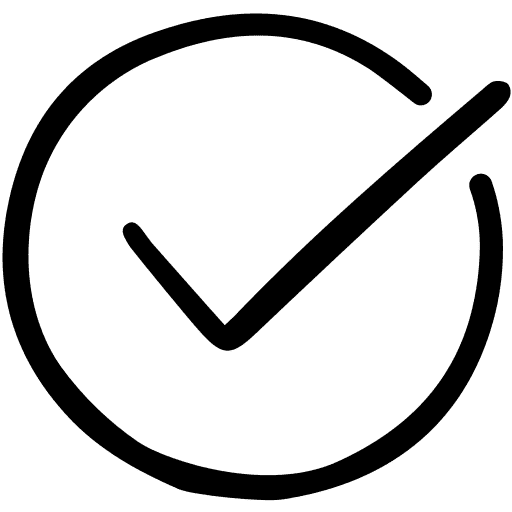
ALL YEAR-ROUND PROTECTION
Take Back Control Now
8
REASON TO CHOOSE SAFE PEST CONTROL
- Guarantee protection all year-round
- 30 Years Collective Experience
- An impeccable reputation across Sydney's Suburbs
- Certified treatments & written Warranty On all work carried out
- Family Owned & Operated
- Rated #1 Pest Control In Sydney NSW
- No Mess, No Smell
- Family & Pet Friendly Treatments
REQUEST A QUOTE
